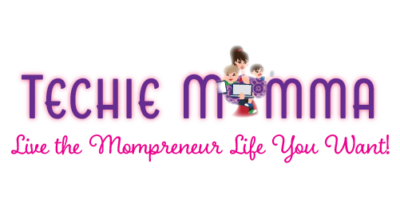As a mom, it’s easy to worry about your child—especially their future!
Do you know that early language learning is the greatest predictor of a child’s future success?
From better mental health and happiness to higher test scores and high school graduation rates, early language acquisition establishes life trajectories.
Why stop at just one language?
Studies show that there are dozens of benefits to being bilingual, and this number is only expected to increase.
It’s essential for language learning to occur before age 18. After this age, there is a dramatic decline in an individual’s language learning abilities. Meanwhile, children who start even sooner, specifically before age 10, are able to achieve a native level of proficiency.
However, it’s never too late to start your child on the linguistic path to success.
Let’s explore 10 ways early language learning can give your child tangible tools for their future. At the end of the post, I share the #1 time-saving way to teach your child a second language.
Ready to set your child up for success?
Why Early Childhood Is Important for Language Learning
When it comes to dual language learning, early childhood is without a doubt the best time to start.
Kids are like sponges—they absorb everything!
Kids have more neuroplasticity in their brains compared to adults. This means that their brains more easily create neural pathways, change, and adapt. These new pathways help them to unconsciously pick up patterns and information from the world around them.
Since neuroplasticity decreases with age, the first several years of a child’s life are the most critical for language development.
10 Reasons Early Language Learning Leads to Successful Children
Here are 10 incredible benefits that your child can experience from early language learning!
1. Powerful Cognitive Abilities
Bilingual brains are powerful tools.
By teaching your child a second language, you give them a huge cognitive advantage over monolingual speakers.
Brains are like muscles—the more you use them, the stronger they become! Naturally, speaking two languages creates a stronger brain.
Studies show that bilinguals outperform monolinguals in language processing and reaction times. They perform better thanks to the higher amounts of gray matter in their brains. This gray matter processes important information like memory, speech, and sensory perception.
Bilingual brains have to juggle between languages constantly. This continuous dance between languages enhances the brain’s control functions. Dual language learners exhibit greater working memory and cognitive flexibility which leads to higher focus and better multitasking abilities
And the brain benefits don’t stop there! Bilingual brains are less susceptible to diseases like Alzheimer’s. With younger generations expected to live longer, it’s more important than ever to keep your child’s brain active.
2. Effective Social Skills
From iPad kids to teenagers attached to their phones, many younger generations replace human interaction with screen time.
Unfortunately, this lack of connectedness creates higher rates of anxiety and depression. Studies show that younger generations have fewer social skills than their parents.
Early language learning helps prevent this from happening!
Languages naturally teach soft skills, also known as “people skills.” These soft skills include emotional intelligence, social cues, and confidence.
Each of these traits is necessary to be successful in language learning—and in life!
Future leaders will need to be emotionally, socially, and culturally competent to establish healthy relationships and create constructive interactions.
3. Natural Sounding Accent
The most effective way to achieve native or near-native pronunciation and intonation is with early language learning.
Children have sensitive ears and love to mimic every sound they hear. By starting early, your child can eventually converse with the same confidence and accent as a native speaker.
4. Mastery of One’s First Language
Did you know that being bilingual can also help your child master their first language?
Most monolinguals use language without thinking about grammatical rules.
When learning a second language, however, students have to start with the basics. This process requires studying all parts of language, including syntax, semantics, phonology, and morphology.
Understanding these components in one language helps children to apply them in others! Compared to single language speakers, bilinguals have higher levels of reading and writing—even in their first language!
5. Excellent Creativity
Various studies illustrate that creativity is yet another benefit of learning a second language at an early age.
One study found that bilinguals outperformed their monolingual counterparts on the TTCT, a test that measures divergent thinking levels.
The Economist explains that 47% of jobs in America are vulnerable to automation. Although many routine jobs are replaceable, positions that require complex and original ideas are here to stay.
6. Expert Problem-Solving Abilities
Learning a second language boosts critical thinking and mental flexibility. Having to shuffle between language rules and inconsistencies teaches kids to think divergently.
For example, Spanish words like sobremesa have no direct English translation. Bilingual minds are used to finding ways to bypass these barriers and coming up with innovative solutions.
7. Expansive Cultural Intelligence
In-depth knowledge of multiple languages enables speakers to have a better grasp of diversity. Language gives them multiple perspectives and lenses to see the world through.
Bilinguals have a tremendous advantage in the current global climate thanks to their amazing ability to communicate with diverse groups of people.
8. High Test Scores
Academic assessments continue to be an essential part of a student’s stepping stones to success. Students who study a foreign language score significantly higher on standardized tests than monolinguals.
In fact, the 2007 Total Group Profile Report for the SAT found that students with four or more years of foreign language experience averaged 140 points higher (out of 800) compared to students with less than half a year of experience.
9. College Readiness
Did you know that most colleges require at least two years of foreign language?
In fact, the more foreign language credits a student has, the more competitive they will be in the admissions pool. For example, the top colleges expect students to take a foreign language in each of their four years of high school.
People with college degrees get paid more, have greater job satisfaction, and are less likely to be unemployed.
Thankfully, immersion programs like Homeschool Spanish Academy enable students to easily obtain foreign language credits online so that they can get into the college of their dreams.
10. Numerous and Diverse Career Opportunities
As the job market continues to become more internationally integrated in the 21st century, employers tend to look for traits that bilingual speakers possess.
More and more, workplaces need bilingual employees to help with foreign policy, international networks, and cross-cultural business campaigns.
Studies show that being bilingual opens the door to more job opportunities. The Bureau of Labor Statistics demonstrates that the demand for Spanish jobs like interpreting will increase by 25% between 2020 and 2030.
Moreover, employees who speak more than one language generally get paid more than monolinguals. According to the Economist, this number can be as high as $50,000 to $125,000!
How Do I Get My Child Started with Early Language Learning?
Are you wondering, “What are the common approaches to language learning for kids?” Clearly, there are a plethora of reasons to get your child on the linguistic learning path as soon as possible. Here’s how you can get started!
Pick Your Language
Spanish is the best choice when it comes to picking a foreign language. Besides being the most sought-after language in the United States, Spanish is also one of the most widely spoken languages in the world.
There are over 550 million Spanish-speakers spread across more than 20 countries!
Subscribe to an Online Immersion Program
Chances are you don’t have extra time to spend on extravagant trips abroad. Thankfully, online immersion programs can bring the Spanish teacher to you with an effective early language learning approach.
Be careful, as not all online Spanish classes are alike! The best language curriculum combines methods like class time and activities with immersion experiences.
Provide Support at Home
If you want to go the extra mile, try out these strategies for supporting Spanish learning at home:
- 8 Spanish Homeschool Activities You Should Do ASAP
- How to Create a Homeschooling Routine (and Include Learning Spanish!)
- How To Raise a Bilingual Child in a Monolingual Household (Backed by Science)
- 5 Educational Video Games to Practice Spanish
The Easiest Language Learning Solution for Mompreneurs
One of the drawbacks to being a mompreneur is not having enough time in the day to accomplish everything. The idea of adding a new language into the mix might seem intimidating.
Homeschool Spanish Academy (HSA) is here to help!
Proven Process
HSA is an accredited online language learning school with more than 10 years of Spanish teaching experience. It utilizes complexity and mixed methods to surround your child with language in a way that is both fun and powerful.
HSA does all the language learning work for you so that you have more time to dedicate to other adventures.
Native Spanish-Speaking Teachers
HSA’s unique method brings native Spanish-speaking teachers to you. Your child can learn Spanish from a Hispanic professional—without having to leave home.
Perfect For All Ages
From preschool to high school, students of all levels can learn Spanish with HSA!
Preschool Program
- Ages 5-6
- 25-minute classes
- Sample curriculum
Elementary Program
- Ages 6-10
- 25-minute classes
- Sample curriculum
Middle School Program
- Ages 10-13
- 50-minute classes
- Sample curriculum
High School Program
- Ages 13-18
- 50-minute classes
- Sample curriculum
- Earn foreign language credit
Flexible
HSA offers both variability and consistency. Whether you want a regular class every week or have a hectic schedule that requires changing days, HSA has you covered.
With over 150 native Spanish-speaking teachers to choose from, HSA lets you pick the day, time, and teacher of your choice.
Affordable
HSA offers a variety of class packages with session prices as low as $7-$15. Choose between packages of 15, 30, or 60 classes that you can utilize as needed.
Try a Risk-Free Class Today
HSA’s low-cost pricing packages and flexible program options make early language learning easier than ever.
The testimonials and reviews speak for themselves. Join over 24,000 actively enrolled students by signing your child up for a free trial class today!


 BY TECHIE MAMMA
BY TECHIE MAMMA